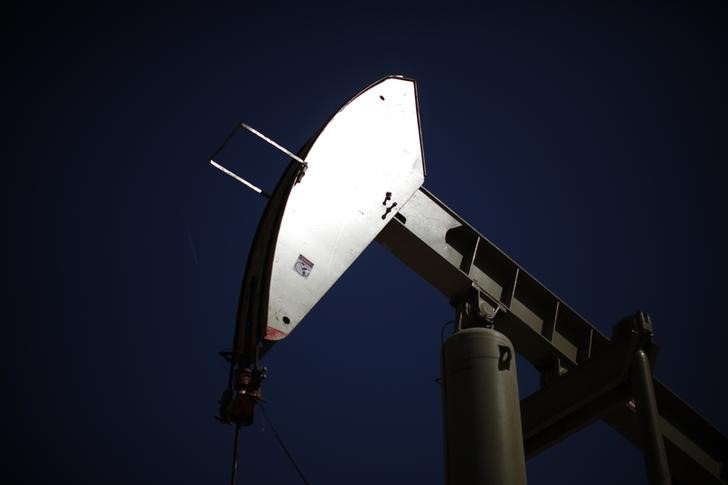By Aaron Sheldrick
TOKYO (Reuters) - Crude futures were mixed in Asian trading on Friday as fresh signs of inventory building and the Fed's rate hike this week kept prices under pressure amid a global glut of oil that shows no sign of abating, prompting traders to buy more put options.
U.S. crude's West Texas Intermediate (WTI) futures (CLc1) were down 9 cents at $34.86 a barrel by 0731 GMT (2.31 a.m. ET). Brent (LCOc1) was up 12 cents at $37.18 a barrel.
"It's the usual story. We have plenty of oil and oil demand is weak," said Avtar Sandu, Senior Commodities Manager, Phillip Futures in Singapore. "Everything is bearish, there is a bottom but for oil we don't see anything yet."
Both contracts are on track to post a third week of losses, with U.S. crude down 2.2 percent and Brent off by 2 percent.
Sandu said the bears won't be satisfied till they test lows reached during the global financial crisis of $32.40 for WTI and $36.20 for Brent in December 2008.
"That's the first target the bears are gunning for," Sandu said. "I think they will test those and once they hit them, see whether they can press below $30 for WTI.
Traders are preparing for even lower crude prices next year, taking up increasing amounts of put options to sell U.S. crude in February should prices fall to $30, $25 or even $20 per barrel, according to Reuters data.
From February, the northern hemisphere peak heating demand season starts coming to an end, leading to lower energy and fuel demand in spring and summer.
At the same time, many expect Iran crude exports to fully return to the market during the first quarter of 2016 if or when sanctions against Tehran are lifted.
That will potentially add to an already huge glut which is seeing hundreds of thousands of barrels of crude produced every day in excess of demand.
Market intelligence company Genscape reported an inventory increase of 1.4 million barrels at the Cushing, Oklahoma delivery hub for WTI futures, traders who saw the data said on Thursday.
That came a day after the U.S. Energy Information Administration (EIA) said crude stockpiles in the U.S. rose by 4.8 million barrels last week, compared with analysts expectations for a draw. [nL1N1451FK]
The seemingly unstoppable decline in oil is raising concerns about investment in future supplies, IEA Executive Director Fatih Birol said on Friday in Singapore.
"The current low oil prices make me worried because it means lower investments in new oil projects," he said.

"This year oil investments declined more than 20 percent and more importantly we expect it will decline next year as well," Birol said. "We have never seen in the last 30 years oil investments decline two years in a row in the world."
(Addtional reporting by Henning Gloystein; Editing by Michael Perry and Biju Dwarakanath)